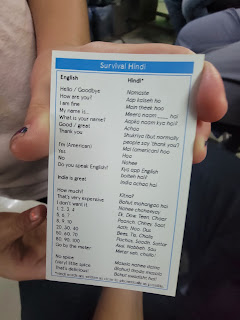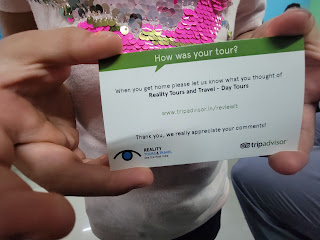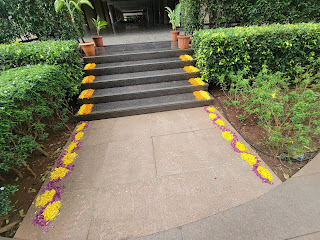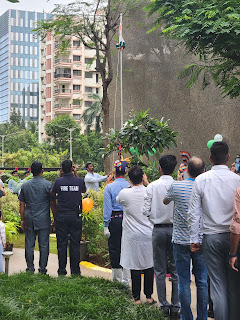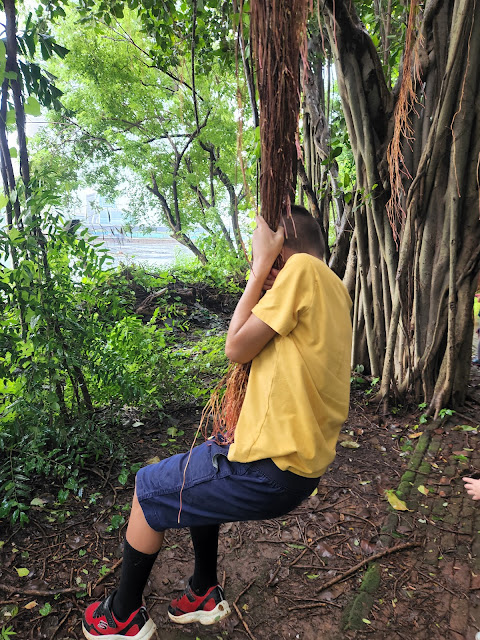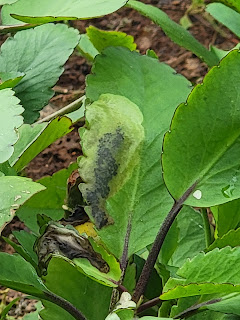We did a tour that I have been wanting to do for quite some time--to one of the "slums" in Mumbai--Dharavi. I put slums in quotations, because what we saw would not really qualify as slums for me. I was truly amazed.
I hesitated to take the tour because I did not want to pay some company for a tour through people's unfortunate experience. But I found a company that is run by locals to Dharavi and they donate 80% of the tour fee back to the community through educational classes. We asked of friends to come with us and we went for the tour. The company is called Reality Tours.
Our two tour guides spoke fluent English and were such great guides. They had learned English from the Reality Tours program. They are a true example of success. They spent the next two hours exploring neighborhoods, homes, and workshops.
Dharavi is only 400acres of land but has over 1,000,000 people! It is one of the largest slums in Asia. It is referred to as slums because people live on land that is not theirs. However, some of them have been living in Dharavi for over 100 years! Years ago there was a push to get people into buildings so they built some high rises and put people in. Apparently, it helped in other slums around the area but it did not take in Dharavi. Instead over the years families have built cement building on the small portions of land their family lives on. In the mid-1990s, the government allowed them to bring in water and electricity to Dharavi. As we walked through the narrow winding alleys, we could see how the pipes were just laid on the ground where buildings existed. Therefore, instead of calling it a "slum" it is simply just referred to as Dharavi.
As we toured we visited two different areas of Dharavi--the industry side and the residential side.
All I can say is that it was inspiring to see how inspiring it was to see how people have so little, but they were kind and genuine as we stopped to talk. They smiled, they shook our hands and asked our names, they also gave us food or other items that they were making. I tried to give them money to pay for the items but they would welcome us into their homes and treated us like family--including feeding us.
We were unable to take photos--sadly, because there was so much I would have loved to photograph as they went about their day. The simple, organic nature of it all was amazing. But they want to protect the people that call Dharavi home. There were a few people that were willing to allow us to take photos.
We went in and watched people go through the rubbish by hand, then they would use small mallets to separate the different types of plastics. (We learned that there are 4 different types of plastic in water bottles--each had to be sorted and recycled in different ways). From there, it goes to be chopped up into small little bits and washed to be reused. We were able to experience each step--by experienced, I mean we were able to touch, smell and see all of it.
We then went to where they dye fabric. The photos below are from one of the dye factories. It was so cool to see the vats of dye and the process of dying cloth.
Next, we were able to see all the sewing shops. We watched people make beautifully embroidered traditional wear, we saw them making trousers for large brand designers, we saw them making jeans and shirts and anything else that you can expect. As we stopped to watch, all of the workers would smile and be so proud to show off the work that they were doing.
We went to the area where they make terracotta pots and holiday oil lamps. The have mud brought in from Gujarat, the state to the North of Maharashtra. They bring it into Dharavi and they soften it by foot then use potter's wheels to create the pots. The kilns are in between their houses. I can only imagine how HOT that must get during the summers.
They let the kids choose a Diwali (Festival of Lights Holiday) lantern.
They have a whole leather tanning area. Where they tan the leather, dye the leather, and cut it for use on bags. They used to make knock-off brand bags, but they have developed their own Dharavi brand. It was so cool to get some bags and belts all made within Dharavi.
We spent time winding through the residential areas. We stopped at bakeries and some of the small shops making food as we went. Children and adults alike would come out to say hello. After all, we were a large group of loud Americans walking through their space. Some of the corridors were about as wide as our shoulders. Others were completely dark as the shacks stacked on top of shacks block out the sun. We had to use our cell-phone lights to not trip over the uneven floors. Unknown liquid would drip on our heads (told ourselves it was just the rain water making its way down) and the mess of electrical wires were so low we had to duck to not rub our heads on them.
Once in awhile we would get a glimpse into the homes and see whole families (5 or 6 people) in a small room about 4 feet by 6 feet. Others would sleep in their workspaces. They clean up their beds during the day to work and then lay them back down at nigh. They use a community communal bathroom that are spaced out along the route and small courtyards (maybe 8 feet or 10 feet square) are built between the haphazardly stacked homes and children were playing cricket and soccer. It was fun to pass these areas because the children were so excited to stop us and practice their English that they had been learning. Some of them had just started and would repeat "Hello! My name is ___" over and over. Others would come up and shake our hands with confidence, introduce themselves and then ask us questions about our names and what country we are from.
We were able to see the school building where the Realty Group gives English lessons to Dharavi community members. They used to also teach computer skills and other life skills but sadly, they had to stop during COVID because they did not have enough tourists coming through to pay for the classes (remember 80% of the tour fee goes towards the educational classes).















